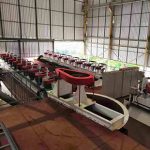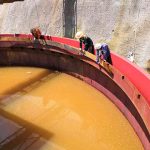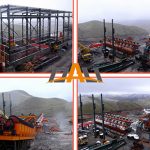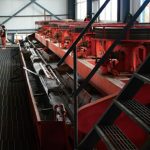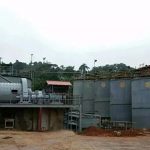A Beginner’s Guide to Underground Mining
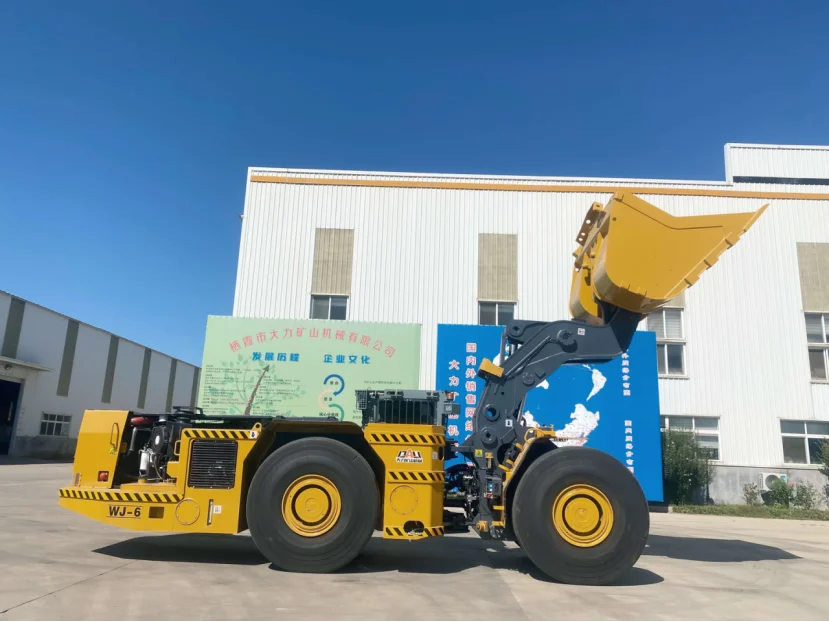
Overview of Underground Mining
What Is Underground Mining and Why It’s Used
Underground mining, often called subsurface mining, involves pulling out valuable minerals or ores from deep below the Earth’s surface. Subsurface means “beneath the ground.” Unlike surface mining, this work happens in tunnels or shafts far underground. It’s used when valuable deposits lie too deep to dig out from above. This method suits coal and metal mining well because it reaches resources that surface methods can’t touch economically.
Key Differences Between Surface and Underground Mining
The main difference is where the minerals are taken from. Surface mining grabs resources close to the ground, covered by dirt or loose soil. Underground mining, however, goes after deposits buried deep below. Surface methods are often cheaper and safer. But underground mining is chosen when deposits are far down or when we need to protect the environment from big surface disruptions.
Common Applications Across the Mining Industry
Underground mining is widely used to get precious metals like gold and silver. It also pulls out industrial minerals such as potash and salt, plus energy resources like coal. Many companies use this method in non-coal metal and coal mines. It’s vital because it can reach deep ore deposits in all kinds of rocky settings.
Types of Underground Mining Methods
Room and Pillar Method: Structure and Suitability
This approach carves out open spaces, or rooms, in the ore deposit. Pillars of untouched material are left to hold up the roof. It works great for flat deposits, like coal seams. The room and pillar method is safe but leaves some ore behind in the pillars, so not all the resource is collected.
Cut and Fill Method: Process and Advantages
Cut and fill is a careful method. Miners remove ore in flat layers. After each layer, they fill the empty space with material before digging the next. This keeps the ground steady, which is perfect for uneven ore shapes or shaky rock areas. It helps prevent collapses and keeps things safe.
Sublevel Stoping: Design and Application Scenarios
Sublevel stoping uses drilling from levels built inside the ore body. Miners blast holes, and the broken ore drops to collection points. This method shines in rocky valleys with water tables nearby. It allows fast, large-scale mining with little mixing of waste rock.
Block Caving: Large-Scale Extraction Strategy
Block caving relies on gravity. Miners undercut a big chunk of ore, letting it crumble and fall. It’s great for low-grade but huge ore deposits. Once set up, it’s a low-cost way to produce a lot of ore quickly.
Grand Underground Mining Tips for Beginners
Planning for Ventilation, Access, and Haulage Systems
Good mine planning starts with air flow. Ventilation systems bring fresh air to workers deep underground. Safe paths, like shafts or sloped tunnels, are needed for people and machines to move easily. Haulage systems should carry heavy loads quickly to save time and boost output.
Importance of Ground Support and Rock Stability
Rockfalls are a big danger underground. To keep areas safe, miners use rock bolts, mesh, or sprayed concrete. When building tunnel walls, careful testing and analysis improve the quality and amount of ore mined. Strong support systems stop dangerous collapses.
Managing Water Ingress and Drainage Effectively
Water can cause trouble by weakening rocks or flooding tunnels. Good drainage systems, like sumps, pumps, and waterproof barriers, keep water under control. This protects the mine and keeps work going smoothly.
Essential Underground Mining Methods and Equipment by Qixia Dali
At Qixia Dali Mining Machinery Co., Ltd., we offer custom solutions. Our equipment fits specific underground conditions perfectly.
Drilling Equipment for Different Mining Methods
Drilling is key for methods like sublevel stoping or cut-and-fill. Our tools are built tough for hard rocks. They drill precisely and last long in rough conditions.
Loading and Hauling Machines for Confined Spaces
Our WJ-4 LHD (Load-Haul-Dump) loader carries a 10-ton load. Its small size fits narrow tunnels well. It uses a top-notch power system for quick climbing and high output. For bigger jobs, our WJ-10 LHD handles 21 tons. It has a Volvo 375kW engine and Dana transmission, offering power and easy movement in tight spots.
Ventilation Systems Designed for Deep Mines
Clean air is critical deep underground. Our machines have sealed cabs meeting FOPS/ROPS standards. Optional fresh air systems keep operators safe during long shifts in deep mines.
Oreholz Ore Transport Solutions for Various Layouts
Moving ore efficiently needs reliable trucks. Our UK-20 underground dumper carries 20 tons and fits mid-sized mines. Its compact design works in tight spaces. For bigger needs, the UK-40 truck hauls 40 tons. Its articulated frame ensures great handling in tricky tunnels.
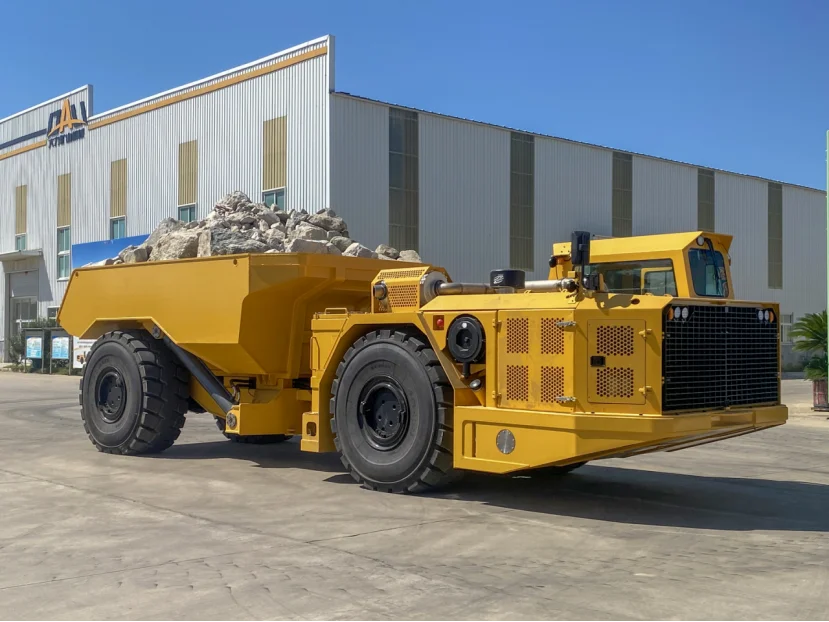
Operational Efficiency in Underground Mines
Automation Trends in Underground Equipment
Automation makes mining safer and faster. It cuts down on workers being in risky spots. Our Qixia Dali products, like WJ-6 loaders and UK-series dumpers, include auto-lubrication, remote controls, and onboard screens for easy monitoring.
Maintenance Strategies to Reduce Downtime
Regular upkeep keeps machines running. Our equipment has centralized lubrication and filters placed for quick access. This makes maintenance fast, even during busy shifts, cutting downtime.
Training Programs Provided by Qixia Dali Experts
We provide full training on safety, maintenance, and diagnostics. Our programs help your team use equipment well and stay safe, boosting performance.
Frequently Asked Questions (FAQ)
What are the main types of underground mining methods?
Common types include room-and-pillar, cut-and-fill, sublevel stoping, block caving, and more, depending on the deposit’s shape and size.
How does underground mining differ from surface mining?
Underground mining reaches deep deposits through tunnels or shafts. Surface mining removes topsoil to get near-surface materials directly.
What kind of equipment do I need to start an underground mine?
You’ll need drilling rigs, LHD loaders like Qixia Dali WJ-4, dump trucks like UK-20, ventilation fans, and ground support tools, based on your method.
How do I manage ventilation in an underground mine?
Plan air paths with fans or natural drafts. Make sure fresh air flows to all work areas and harmful gases exit through exhaust routes.
Is automation worth investing in?
Yes, it improves safety and uptime. Qixia Dali’s loaders have auto-lube systems and remote monitoring, which save time and reduce risks.
To learn more about starting or improving your underground mine with our reliable machinery, like the WJ-10 LHD loader or UK-series dumpers, reach out to us! Qixia Dali Mining Machinery Co., Ltd., founded in 1998 in Yantai City, has over 130,000 m² of factory space and more than 200 staff, including 90 engineers. We provide full solutions, from design to after-sales support, tailored for underground mines worldwide.
About Us
Qixia Dali Mining Machinery Co., Ltd was established in 1998, located in Yantai City.
The company is mainly engaged in the design, development, production, installation and training of underground mine equipment and ore processing equipment, spare parts supply and sales.
MoreContact Us
- Xinbang Rd, Private Economy Park, Qixia, Shandong Province, China
- +86 135 5307 3459
- ytdali@ytdali.com
 +86 13553073459
+86 13553073459
+86 13553073459
+86 13553073459
